
7 | FROM THE SECRETARY
9 | FROM THE DIRECTOR
10-11 | EVERY VETERAN IS A STORY
12-17 | MEETING A HERO
18-19 | FROM THE COLLECTIONS
20-21 | ORAL HISTORY OF THOMAS J. LUCAS
22-23 | CEMETERY TOURS
24-26 | FROM THE FOUNDATION
27 | THANK YOU DONORS











7 | FROM THE SECRETARY
9 | FROM THE DIRECTOR
10-11 | EVERY VETERAN IS A STORY
12-17 | MEETING A HERO
18-19 | FROM THE COLLECTIONS
20-21 | ORAL HISTORY OF THOMAS J. LUCAS
22-23 | CEMETERY TOURS
24-26 | FROM THE FOUNDATION
27 | THANK YOU DONORS









PRESIDENT
DANIEL CHECKI
JOANE MATHEWS
TREASURER
DAVE HEILIGER
SECRETARY
WILLIAM F. HUSTAD
DIRECTORS AT LARGE
ALEJANDRO ARANGO-ESCALANTE
DAN GREENE
TIMOTHY LA SAGE
NATHANIEL T. MILLSAP, JR.
PAUL MCEVILLY
CONNIE WALKER
2/14/24–7/12/24
Carl B. Barden
Patricia Barden
Angela Becker-Bradley
Rick Berry
Joseph Bradley
Beverly Cobb
Melvin Courtney
Shari Gullo
Joseph Jameson
MUSEUM MISSION
The mission of the Wisconsin Veterans Museum is to commemorate, acknowledge, and affirm the role of Wisconsin veterans in America’s military past and present EXECUTIVE
JENNIFER.CARLSON@ WVMFOUNDATION.COM
MOLLY.SNOW@ WVMFOUNDATION.COM
A most sincere thank you to all who donated to our collection from February 2024–July 2024. Thank you for your generosity and support of the Wisconsin Veterans Museum.
Connie and Alan Koberle
Darleen Krueger
Rod Mac Donald
James Megellas
Cynthia Mestelle
Mineral Point Public
Library
Denise Moyle-Shaffer
Dan Naylor
Barbara Petrouske
Coey Podraza
Sauk County Historical Society
Marc Storch
Daniel C. Strizek
Bart T. Van Roo MEMBERSHIP & EVENTS
The Bugle is published three times earch year for our members and friends through the support of the Wisconsin Veterans Museum Foundation. The Wisconsin Veterans Museum Foundation provides funds for the support of artifact acquisitions, exhibit production, and the development of educational programs.
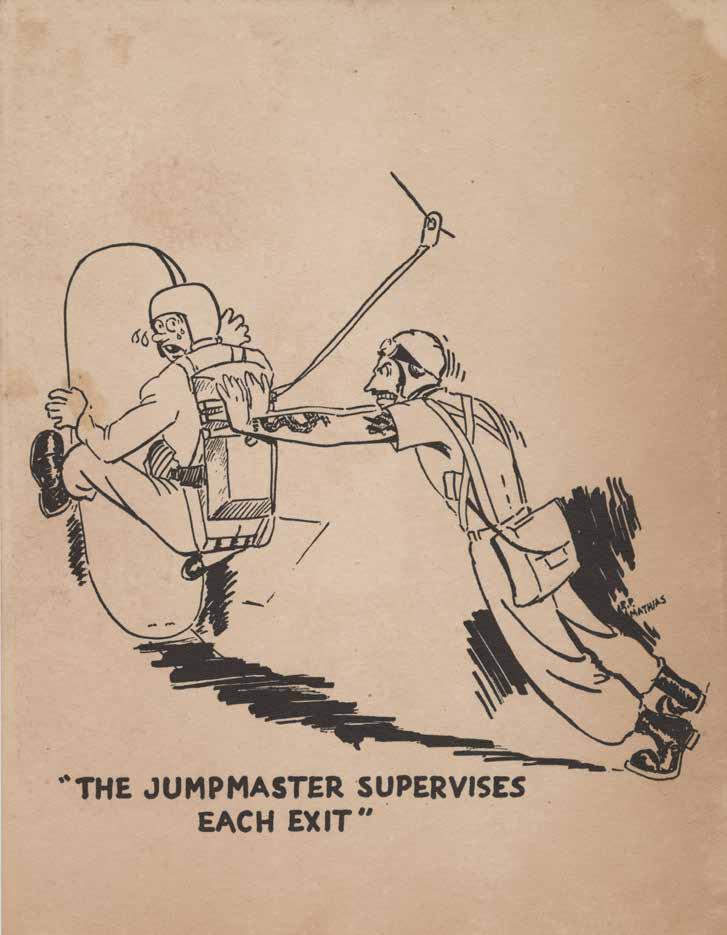
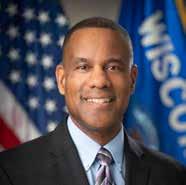
I want to start off by saying thank you for your continuing support of the Wisconsin Veterans Museum. We couldn’t do it without you. And for that, everyone here at WDVA is grateful. Your support enables us to fulfill our mission to honor the legacy of Wisconsin’s veterans, to make sure that their stories are not forgotten.
I hope you’ll agree that the Museum staff is doing a pretty good job at keeping those stories alive. The American Association for State and Local History (AASLH) agrees. They recently announced that the Wisconsin Veterans Museum is the recipient of an Award of Excellence for its exhibit, “Souvenirs of Service: The Things They Kept.” My two boys agree. I took them to see the new special window exhibit commemorating the 80th anniversary of the D-Day invasion and they were impressed, which is saying something since they are nine and 13.
And I might be biased, but I was impressed by the “In Her Boots” exhibit which debuted on June 12th, Women’s Veterans Day. It features a rotating display of 150 combat boots decorated by Wisconsin women veterans. Each boot is intended to raise awareness of the individual experiences and unique needs of women veterans, whose stories all too often fall under the radar. The display will be in our museum’s window through the end of summer. I hope you can make time to see it for yourself and pause for a moment to think about the women who have had to walk in those boots and the stories they have expressed through art.
We know the impact of sharing veteran stories, how they connect people across the years and from diverse backgrounds. If you haven’t already, please visit our museum’s website to learn how to share your story, a photo, or a fond memory of your time in uniform.
Together we can preserve their experiences for future generations. Thank you for helping us live up to the promise of the Museum’s motto, “Every Veteran Is a Story.”
Yours in Service,
James Bond Secretary-designee Wisconsin Department of Veterans Affairs
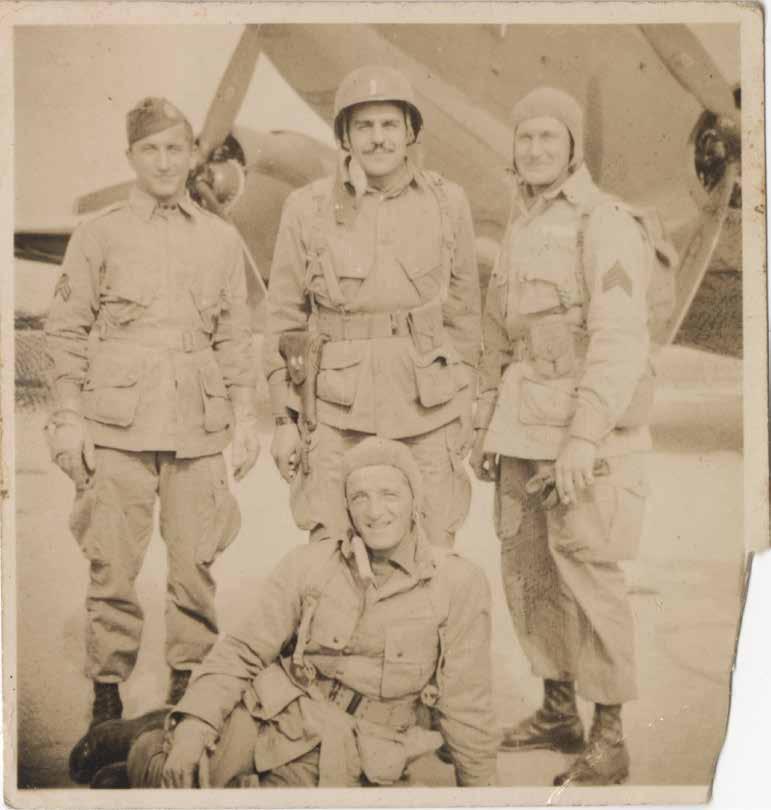
Kendrot, Megellas, Rice and Gronokowski, England, 1945. From WVM Mss 2537, James Megellas Papers, still and moving images and audio recordings, 1930-2023. WVM.2537.I171
Dear Friends of the Wisconsin Veterans Museum,
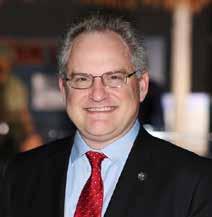
Greetings! I hope you all are enjoying your summer so far. It has been an exciting few months, especially as we celebrated the 80th anniversary of the Normandy landings. The media and public response to our front window exhibit, and the stories we are sharing, has been outstanding. A few days later, we opened the "In Her Boots" window display, honoring women veterans. If you haven’t yet, please come by and see both before they close in the fall.
Speaking of exhibits, in late June we learned that AASLH (the American Association for State and Local History) gave our exhibit "Souvenirs of Service" a prestigious Award of Excellence. This is a tremendous national recognition, and a strong tribute to the creativity and work that went into such a great exhibit. I am so proud of the team for this recognition. "Souvenirs" will be on view the rest of this year, and so please come by and see it.
This issue highlights Operation Market Garden and our acquisition of the collection of James Megellas, a highly decorated member of the 82nd Airborne Division in World War II and namesake of our museum gallery at King. Megellas, a Fond du Lac native and 1942 ROTC graduate from Ripon College, fought with great distinction in World War II, later serving in Vietnam and into the 21st century in various capacities. Documentaries have featured him, and John Ratzenberger portrayed him in the movie A Bridge Too Far. We are deeply honored that the family chose the Wisconsin Veterans Museum to be the home of Megellas’ artifacts and memories.
The museum continues our extensive program offerings which continue to attract audiences from across the state, nation, and world. These are only possible with the help and support of the Wisconsin Veterans Museum Foundation. I encourage everyone to see what is available on our website.
Best wishes to all of you and thank you for your continuing support. See you at the museum soon.
Best,
Chris Kolakowski
Chris Kolakowski Wisconsin Veterans Museum Director
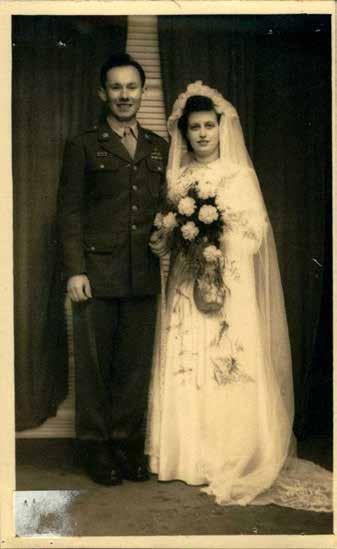
Joseph Reilly , of Janesville, Wisconsin, joined the U.S. Army in March 1943 and trained to be a paratrooper. He deployed to England in February 1944 as a member of the 501 st Parachute Infantry Regiment, 101 st Airborne Division. He jumped during the D-Day invasion and, on his subsequent return to England, he met and fell in love with a local woman named Eileen. His next jump took place 80 years ago during Operation Market Garden. Reilly went on to serve at Bastogne and saw the war out in Europe, earning a Bronze Star along the way. He returned to England in March 1945 and married Eileen. The two returned to Wisconsin and raised three daughters .
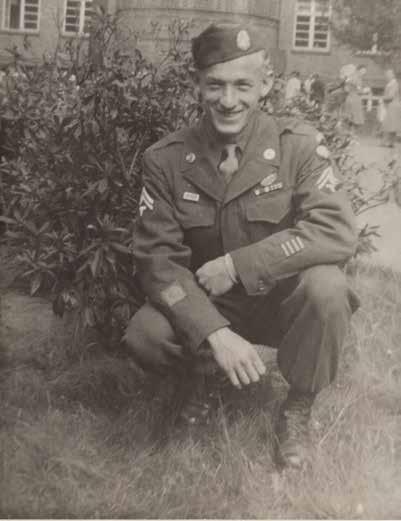
Robert Koeppen , of Milwaukee, was drafted into the U.S. Army on December 12, 1942. He trained to be a medical technician and also received his glider qualification. He deployed to North Africa in April 1943 and served with the 307 th Airborne Medical Company, 82 nd Airborne Division. He took part in his first glider operation at Sicily and his second at D-Day. His third and final glider operation took place 80 years ago during Operation Market Garden. Koeppen remained in Europe until November 1945, when he returned to the states and settled back in Milwaukee. In addition to American decorations, he also received the Militaire Willems Order and the Belgian Fourragere.
By: Russ Horton
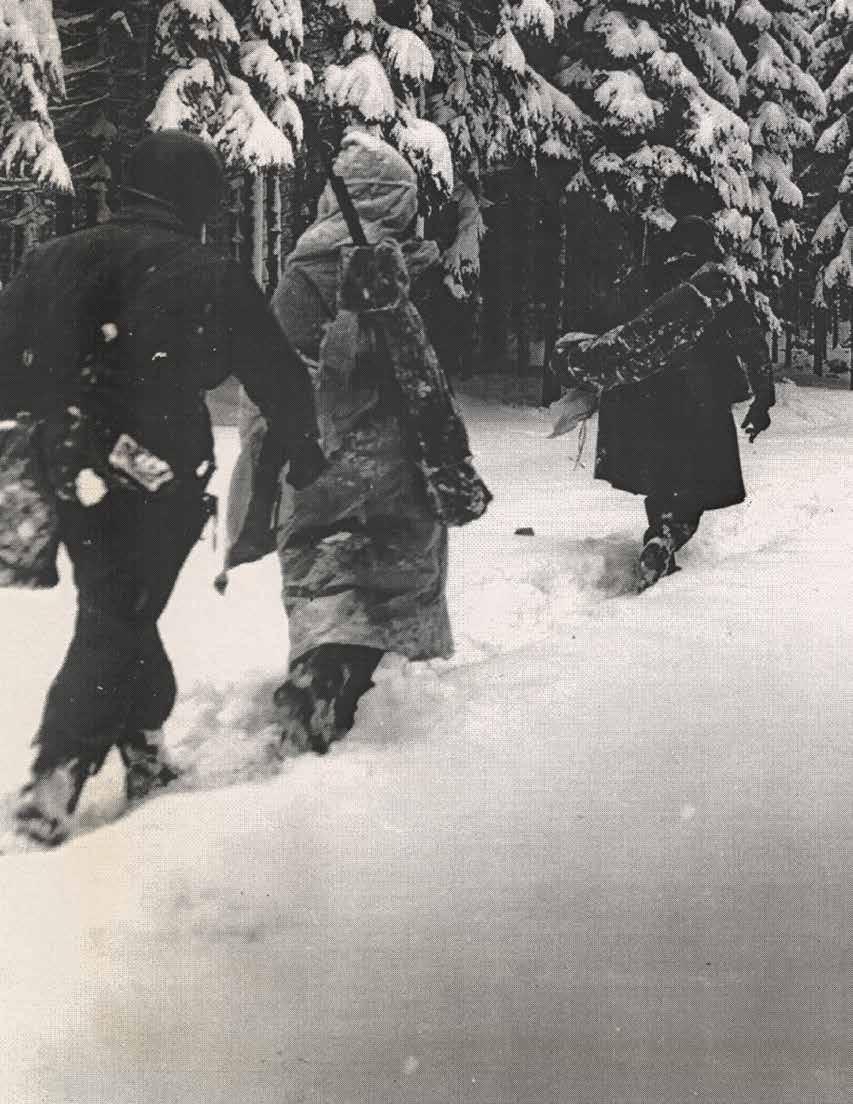
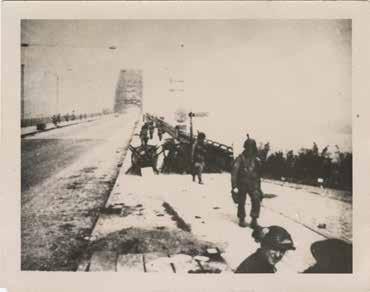
Meeting
James “Maggie” Megellas will always be a highlight of my career with the Wisconsin Veterans Museum. Growing up, the World War II generation was almost largerthan-life in my perception. I was fortunate to grow up on stories from my grandparents and their generation at the peak of public memory that began celebrating them in earnest with the 50th anniversary of the war. Public attention and entertainment media continued to increase that trajectory, building on the foundation established with the classics such as The Longest Day and A Bridge Too Far with the release of movies such as Saving Private Ryan and video games like Medal of Honor and Call of Duty. The influx of popular culture related to that conflict only further solidified and secured the cultural image of that ‘Greatest Generation.’ I would be kidding
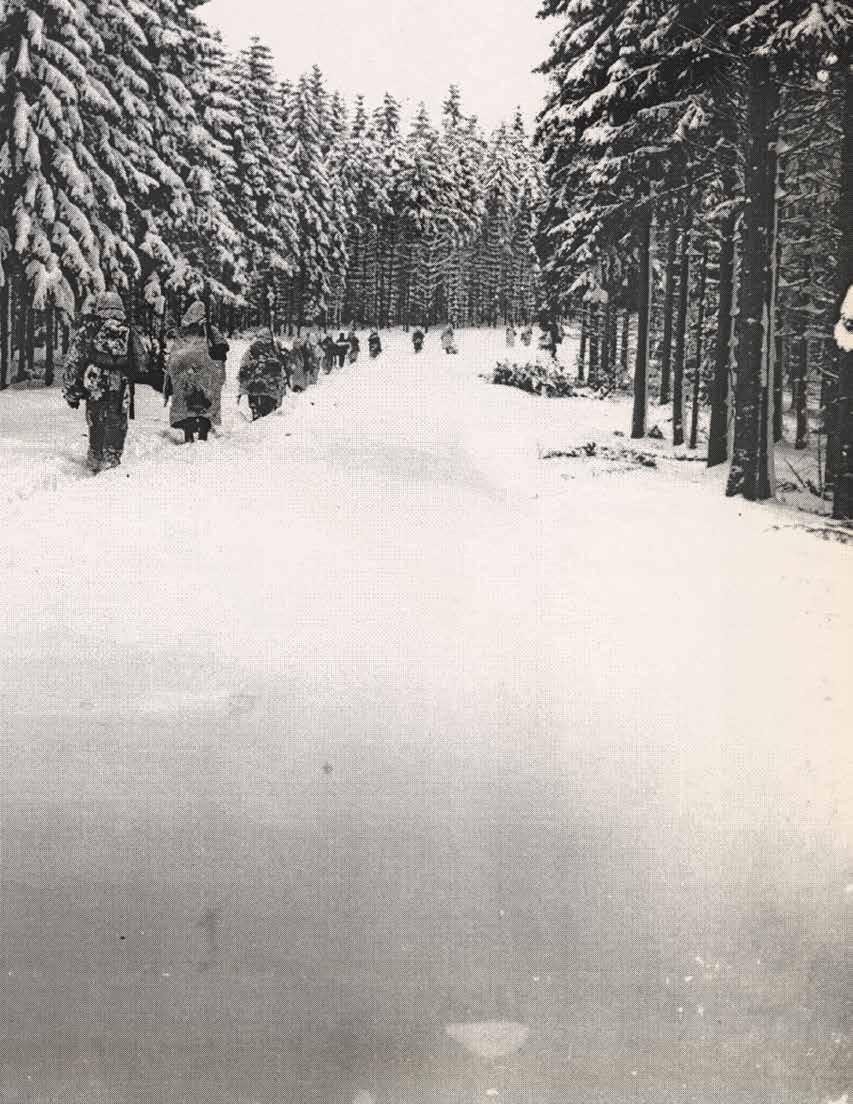
myself if I didn’t recognize the part all of that played in influencing my life choices that led me to the Wisconsin Veterans Museum.
For me, getting to meet veterans is like meeting a celebrity I have idolized since I was young. In 2011, I had the distinct pleasure to meet a true ‘hometown hero’, James “Maggie” Megellas. What I knew of him at the time was minimal but still mighty—he was a highly decorated WWII paratrooper that had seen a lot in his time with the 82nd Airborne from Italy to Holland and Germany. I knew he had written a book about his experience, and that he was the basis for John “Cliff” Ratzenberger’s character in the movie A Bridge Too Far (although his character was officially only credited as “U.S. Lieutenant”). Only knowing about his battlefield exploits— from being wounded twice in Italy, to the
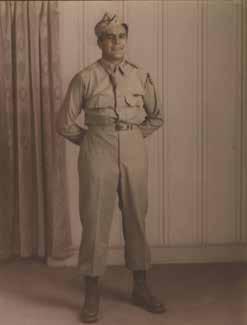
heroic crossing of the Waal River during Market Garden, to fighting off the SS in the Battle of the Bulge and single-handedly taking out a tank to save his platoon—I had created a picture of Megellas as a tough-asnails, stern soldier with a firm handshake, intimidating demeaner, and definitely aware of his own deeds and actions. I truly don’t think I could have been more off base.
As one of the guest speakers at our Operation Greatest Generation event in Green Bay, his remarks hardly referred to himself at all or even what he experienced. His entire speech focused on his ‘buddies’, his ‘friends’, his ‘comrades in arms’ that were gathered in the audience—around 350 WWII veterans from across the state. Even when I asked him to sign my copy of his book, he asked about WWII veterans in my family and inscribed a note on the title page in honor of my grandfather who had recently passed. It was evident to me from that day onward, that Jim “Maggie” Megellas would be the first to tell anyone that he didn’t do it alone.
He would always emphasize the contributions of his “battle buddies” and “comrades in arms.” His insistence on that made sure the recognition was not—and
should not be—on him alone, but rather to everyone who actually or symbolically served with him. Over the course of the next eight years, I learned a lot from him and Carole, his wife, every time they returned to Wisconsin or when we’d chat on the phone.
Born in Fond du Lac, Wisconsin in 1917, James “Maggie” Megellas was a first generation Greek-American. He was in the Reserve Officer’s Training Corps (ROTC) program at Ripon College after previously working with the Civilian Conservation Corps after high school. Humbly, he’d say that he didn’t consider himself a born leader; that he was just trying to get by like everyone else. Looking at his choices from early in life and before the war though it’s clear that he was always driven to take the initiative to do something, to be part of something bigger than himself. It was in his senior year at Ripon that the United States entered World War II.
Originally assigned to the Signal Corps upon graduation in May 1942, Megellas was eager to find the quickest route that would get him overseas and into the thick of the war, first volunteering to be a glider pilot and then the fledgling airborne paratroopers of the U.S. Army. After initial training at Fort Benning and more in North Africa, Maggie joined the 82nd Airborne as a replacement in Company H, 504th Parachute Infantry Regiment just after Thanksgiving Day 1943. He endured the harsh winters in the mountains of Italy before partaking in the assault landings at Anzio in January 1944. It was during the fighting around Anzio that Maggie was wounded twice and received his first two awards, a Purple Heart for the first and an Oak Leaf Cluster for the second.
Maggie’s first combat jump was Operation Market Garden in September 1944. In the fighting around Nijmegen, Holland, he crossed the Waal River in the daring daylight
assault in canvas boats and conducted a bold night raid on enemy positions which ended with him carrying a wounded man with his left arm and aiming his tommy gun with his right. His heroics were rewarded with the Distinguished Service Cross, the nation’s second highest award, next to the Congressional Medal of Honor. His further exploits during the Battle of the Bulge earned him his first Silver Star medal. His second Silver Star cane only a month later where he single-handedly knocked out a German Panther tank that threatened to annihilate his entire platoon during an offensive in the heavy snow outside Herresbach, Belgium.
On May 2, 1945, at the close of the war in Europe, Maggie and his platoon were the first to liberate Wobbelin Concentration Camp. Later in life, Maggie reflected, “I was not prepared mentally to deal with the horror of the camp… it was not until our men witnessed this that we fully realized what we had been fighting for. The destruction of the monstrosity the Nazis had created was the cause greater than ourselves that we had often alluded to but never fully understood. It was a defining moment in our lives: who we were, what we believed in, and what we stood for.”
Maggie’s desire to serve others and his country didn’t end with the war. After he returned home to Fond du Lac, he served as the president of the city council before running for Wisconsin State Assembly in 1956 and then for Congress in 1958 and 1960. It was during this time that he met two very important people: his future wife Carole when she took a job working as part of his campaign team and John F. Kennedy when he was campaigning for president. Kennedy and Maggie became close friends, and President Kennedy appointed him to a mission director position for the United States Agency for International Development (USAID) first
to Yemen and then to Panama. During the Vietnam War, Maggie served as Deputy for Civilian Operations and Revolutionary Development Support (DEPCORDS) with the U.S. Military Assistance Command, Vietnam (COMUSMACV) for diplomatic endeavors. By 1975, he again served with USAID as mission director in Colombia. When he retired from the State Department in 1979, he returned to the U.S. to serve in another capacity: as an economics and international affairs teacher with the Florida Institute of Technology for nine years.
To this day, Maggie is widely considered the most decorated officer in the 82nd Airborne having earned the Distinguished Service Cross, two Silver Stars, two Bronze Stars, two Purple Heart Medals, and countless other national and international recognitions in his veteran lifetime. He was already highly decorated at the end of World War II when General James Gavin, the commander of the 82nd Airborne Division, selected him to be the representative when the Netherlands wished to bestow their nation’s highest honor, the Orange Lanyard of the Military Order of William, as a unit award for the valiant efforts of the entire division in their liberation during Operation Market Garden.
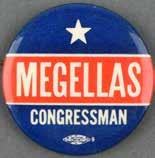


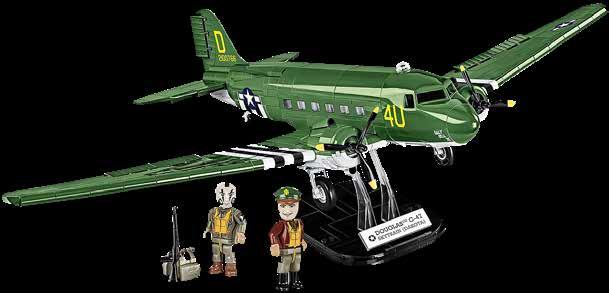

Written in 2003, All the Way to Berlin: A Paratrooper at War in Europe, is Fond du Lac native James Megellas’s eminently readable account of his time as a member of the 82nd Division during World War II. The Museum Store has hardcover copies that are signed by the author. Stop in to get yours before they sell out.
Want a fun way to get your kids interested in history? A COBI World War II era tank or airplane set is a family-friendly activity to pique their curiosity. Made in Poland, these COBI model sets are compatible with other brands of building blocks including LEGO. Be sure to check out our online store regularly. New models (and new versions) of iconic WWII vehicles such as the P-51 Mustang and Sherman tank arrive regularly.
Check out model number, COBI-5743, the C-47 cargo plane that Megellas writes about in his chapter on Operation Market Garden, in All the Way to Berlin. $79.99 896 PIECE SET $27.00
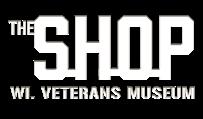
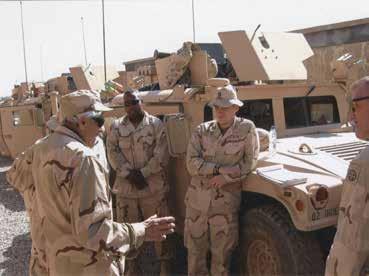
Even with such recognitions, his thoughts and advocacy were always directed toward others. He was very blunt and honest about his wartime experiences – about the brutality of it all, and the mindset they needed then to carry out the missions that today earn our praise. His honesty and frankness instilled a sense of trust and authority on morals and values that I didn’t fully understand or appreciate in the time that I knew him. He didn’t sanitize the stories in any way in order influence your perception of him which took a courage we don’t often talk about or recognize in the moment. He was unapologetically honest about the brutality of war and what the world needed those young soldiers to be. He always shared that he subscribed to the philosophy that “the greatest generation has not yet been born. They will be the generation that does not send its young people off to die in wars but rather learns to live in peace. The Lord did not put us on this earth to kill each other.”
During his final visit to Wisconsin, he shared with me what he wanted to ‘tell his friends’ (as he always referred to everyone he met as a ‘friend’):
“The cause we fought for [was] greater than ourselves…. [we believe in] respect for others, respect for other’s rights, equal
opportunities, respect for authorities, respect for our parents, respect for teachers, respect for everybody else. That’s what we fought for. And we fight to preserve those… If you want to honor me and you want to honor veterans, and those we didn’t bring back, then you abide your lives by those principles by which we fought… Be proud to be an American. We are a unique, distinct people. We stand for something. We believe in something. And we always will.”
Meeting James “Maggie” Megellas always will be one of the highlights of my life, but getting to know him was truly an honor.
“The greatest generation has not yet been born. They will be the generation that does not send its young people off to die in wars but rather learns to live in peace. The Lord did not put us on this earth to kill each other.”
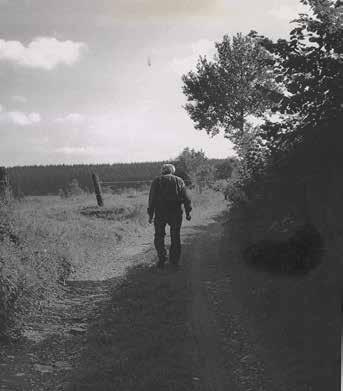
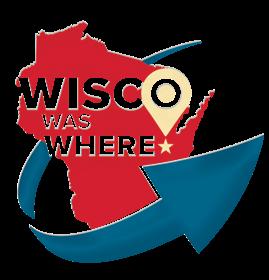

Operation Market Garden remains the largest airborne operation in history, with total troop involvement over eight days surpassing even that of the massive Operation Varsity undertaking that occurred in Germany six months later. Many soldiers from the Badger state took part as members of the 82nd and 101st Airborne Divisions, the two U.S. divisions involved in the “Market” half of the operation that together with “Garden” (ground) forces hoped to advance into northern Germany via key crossing points on the Rhine River. The following are just a few of the museum’s collections from Wisconsin soldiers who were part of the historically significant but ill-fated operation.
By: Andrea Hoffman Collections Manager

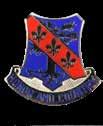
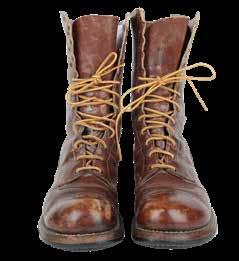
Ernest P. Platz of Columbus, Wisconsin was drafted into the U.S. Army in March 1942. He completed basic training at Camp Claiborne, Louisiana and was assigned to the 327th Infantry Regiment of the 82nd Division. In mid-August, the 82nd was redesignated as an airborne division with the 327th Infantry becoming the 327th Glider Infantry Regiment. The unit was then reassigned to help fill another newly designated airborne division, the 101st. As a “Screaming Eagle,” Platz was sent to England in September 1943 where he continued to train on CG-4a gliders at Ranikhet Army Camp near Reading. Despite their persistent training, the June 1944 arrival of the 327th GIR at Normandy was done largely via Utah Beach rather than by air assault due to a lack of available aircraft.
The regiment would eventually complete their first glider assault three months later during Operation Market Garden. It took three attempts for Platz to make it into Holland that September, and even then, he suffered a crash landing and was, in his own words, “banged up a little bit.” He later received a Purple Heart medal. This action was the start of months of unrelenting battle for his unit, which was broken only by a brief period of recuperation in France before the regiment again faced intense fighting during the Battle of the Bugle. Technical Sergeant Platz survived his ordeal and returned home by the end of 1945, having received a Bronze Star medal with oak leaf cluster amongst other awards.
Platz’s Glider Badge bears a small bronze arrowhead device which was issued to soldiers who participated in combat glider attacks or combat parachute drops. V2011.66.1
Distinctive Unit Insignia of the 327th Glider Infantry Regiment from Platz’s collection. V2011.66.4
Jump boots (officially "Boots, Jumper, Parachute”) were only worn by those in parachute regiments stateside, but these were issued to Platz once he reached England V2011.66.6a,b
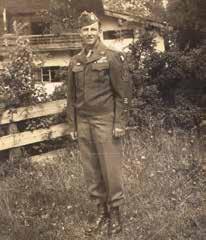
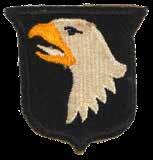
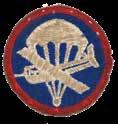
Milwaukee resident Norbert S. Szymczak was working for the Civilian Conservation Corps when he enlisted in the U.S. Army in September 1940. He trained initially with the 60th Infantry Regiment, 9th Infantry Division before transferring to Company H, 327th Infantry Regiment in 1942. That June, he wed Delores Michalski, his sweetheart from Milwaukee, in Alexandria, Louisiana while training at nearby Camp Claiborne. He also became acquainted with another fellow Wisconsinite that summer, Ernest Platz.
Both Szymczak and Platz were part of the 327th Glider Infantry Regiment transition and subsequent departure for glider training in North Carolina in the fall. The elaborate exercises that awaited them in England—glider landings combined with parachute jumps and supply drops—would further reinforce their training ahead of D-Day, and eventually Operation Market Garden. After surviving the intense fighting that followed Market Garden, then-First Sergeant Szymczak played a critical role in maintaining control of the village of Marvie, Belgium — the last defense line between the Germans and the key city of Bastogne — two days before Christmas 1944 during the Battle of the Bulge. Despite being wounded in the face and neck, he was cited for “conspicuous gallantry and intrepidity at the risk of his life above and beyond the call to duty” and awarded a Silver Star Medal for his actions. Both Szymczak and Platz went on to reenlist after returning home and each served again during the Korean War. They also stayed in touch until Szymczak passed away in 1977.
This 101st Airborne Division shoulder sleeve insignia, its eagle displaying a white tongue rather than the typical red, belonged to Szymczak. V2017.005.3
Szymczak’s enlisted paraglider patch was originally worn on a garrison cap. V2017.005.2
Szymczak earned this Silver Star medal for heroic actions during the Siege of Bastogne southeastern Belgium, three months after Operation Market Garden. V2017.005.10f
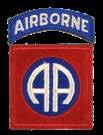

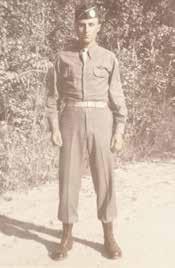


Sadly, not all of our Market Garden veterans were as fortunate as Platz and Szymczak to return home at the end of the war. Donald E. Simonds of Baraboo was working as a lineman for the Wisconsin Power and Light Co. when he enlisted in the U.S. Army in February 1942. He was assigned to the 505th Parachute Infantry Regiment which then joined the 82nd Airborne Division in February 1943. Simonds deployed to North Africa that April and participated in the invasion of Sicily before he was sent to England to continue training in preparation for the D-Day invasion.
By June 1944, Symonds was seriously ill with spinal meningitis and unable to participate in the Normandy jump, yet Simonds recuperated in time for Operation Market Garden three months later. On September 17, 1944, his unit made its fourth combat jump at Groesbeek, Netherlands. Pvt. Simonds was killed in action two days later near the Dutch city of Arnhem. He was initially buried at Molenhoek, Netherlands, but his remains were disinterred and returned to the United States in December 1948. Donald Simonds was laid to rest in his hometown of Baraboo on January 21, 1949.
Simonds posthumously received this Purple Heart medal following his death on September 19, 1944. V2022.097.1a-i
82nd Airborne Division patch with separate tab once worn by Simonds. V2022.097.3 and .4
This 505th Parachute Infantry Regiment oval was originally worn over the left breast pocket of Simonds’ uniform. V2022.097.6
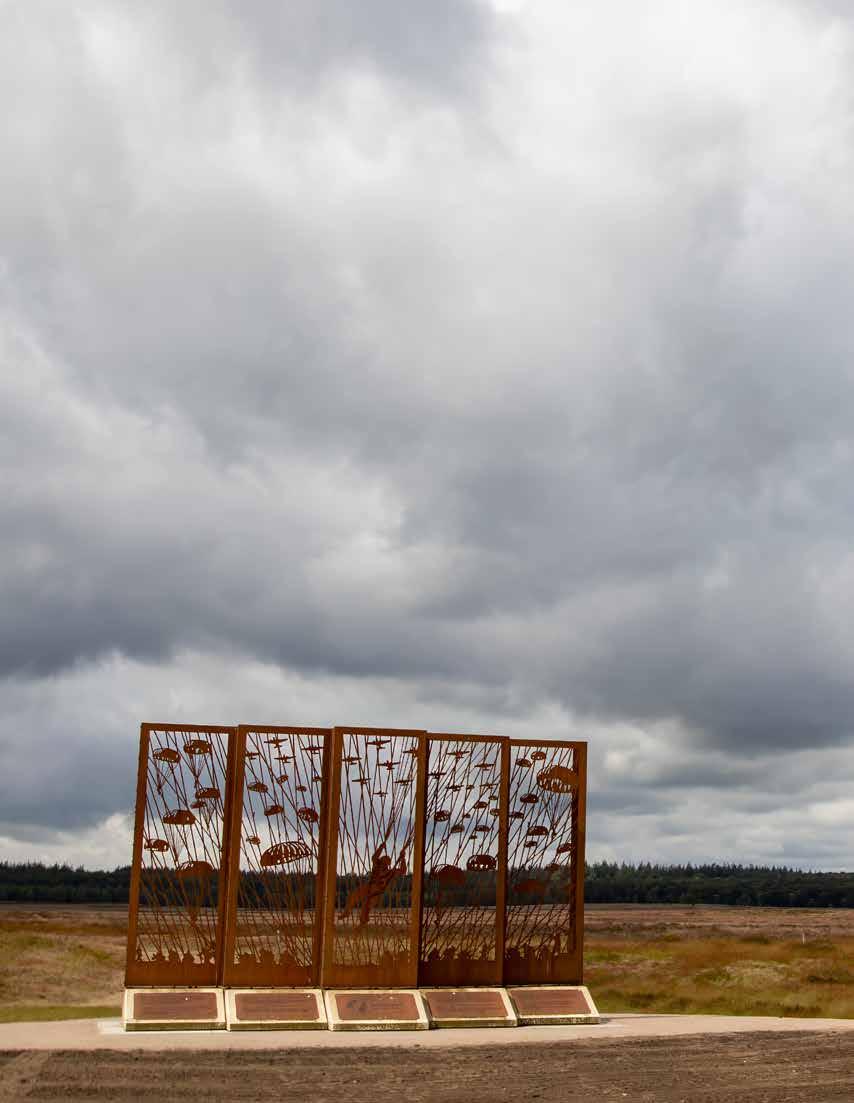
By: Kristen Bonano WVM Archivist
In September 1944, as World War II raged in Europe, an Allied military operation commanded by Field Marshal Sir Bernard Montgomery, 21st Army Group, sought to capture multiple bridges in the Germanoccupied Netherlands. This campaign was called Operation Market Garden. The goal was to try to create a new avenue of approach for Allied troops to invade Germany by going around the heavily defended Siegfried Line and cutting across multiple rivers. Montgomery’s army group consisted of the “Market” branch of the effort, referring to the First Allied Airborne Army, which also contained the American 82nd Airborne Division, and the “Garden” branch, which consisted of XXX Corps, the British ground troops.
As part of the 82nd Airborne Division, Thomas J. Lucas of Markesan, Wisconsin, served in the 504th Parachute Infantry Division (PIR). With the 504th PIR, Lucas had already completed jumps into Sicily as part of the Allied invasion of Italy. During that time, Fond du Lac native James “Maggie” Megellas also served in Italy with the 504th PIR. Lucas later joined the 508th PIR and jumped into Sainte-MèreÉglise, France, as part of D-Day operations. As an experienced paratrooper, Lucas then participated in Operation Market Garden as part of the 508th PIR.
In two interviews, Lucas recalls fighting in Nijmegen and pushing up to the south of the Waal River. Although he was never made aware of the scale of the operation he was participating in, nor its greater importance towards the war effort, he knew his mission was to blow up bridges, capture towns, and kill Germans. Lucas survived deadly patrols and continued fighting in the area into mid-November 1944. However, Allied command deemed the operation a failure in late September when they failed to capture the final bridge at Arnhem. Lucas spoke about his combat experiences in World War II during an interview with James McIntosh for the Wisconsin Veterans Museum in 2000 and with Mik Derks for Wisconsin Public Television in 2002.

The full 2000 interview with Thomas J. Lucas can be accessed by scanning the QR code on the left, and the full 2002 interview with Lucas can be accessed by scanning the QR code on the right.

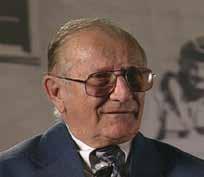

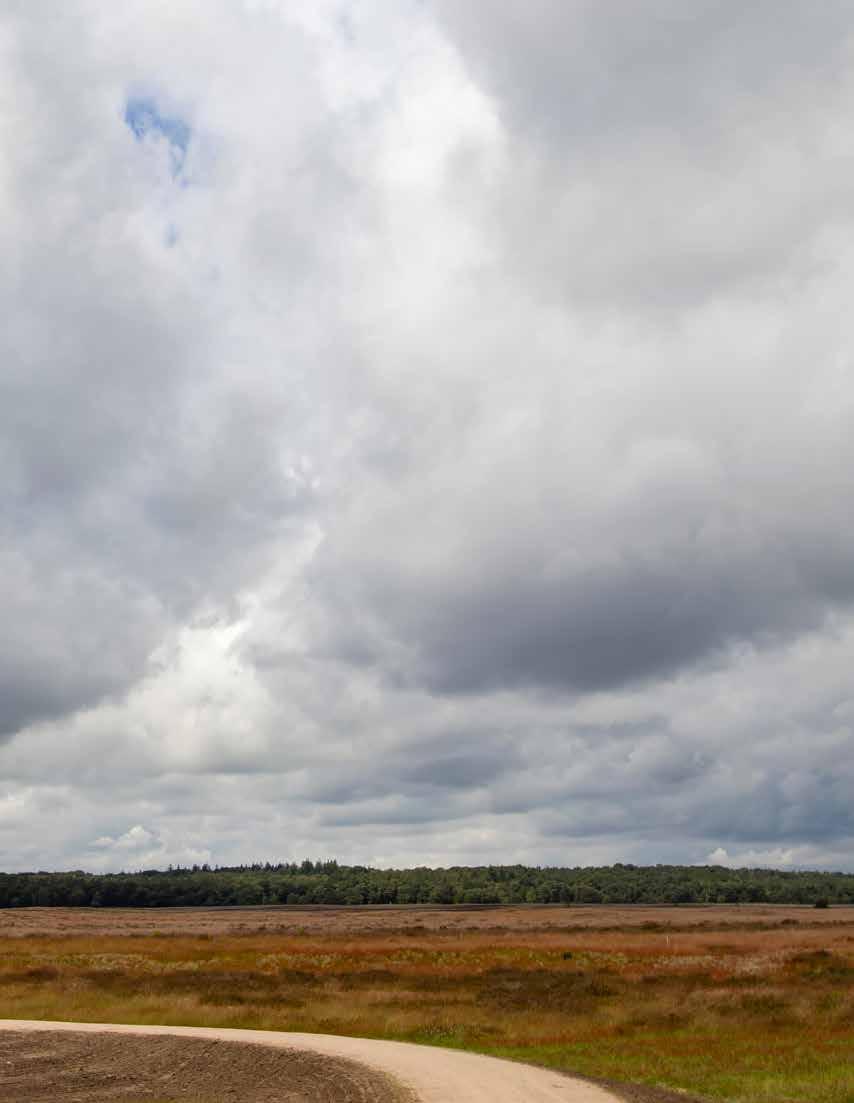
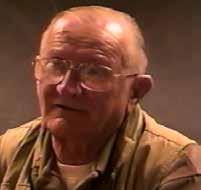
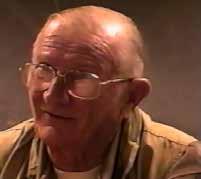
"So, this was Sunday afternoon, September 17th ; nice, bright, sunny day. We went into Holland. We landed outside of Nijmegen, right near the German - Holland border. The Waal and Maas Rivers go down and separate the two. We landed. There were German troops and we landed right in the middle of German troops. No large force, but there was gunfire. Then we assembled."
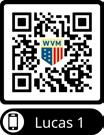
"We crossed the bridge at night at Nijmegen. We got across the bridge at Nijmegen, going toward Arnhem. We were in a Duck [DUKW], a 2 1/2-ton Duck. They were transporting us, and we were one of the last ones in the line. We got to the bridge and there was something going on the other end of the bridge. So, the MPs stopped us. When we got the clearance to go, they sent us to the right. At the time, an artillery barrage was coming in and it was hitting the cemetery. When we went by it, it was disrupting all the graves. You had a strong odor of decomposing bodies, you know."
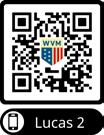
Lucas discusses going out on patrol during Operation Market Garden: "Yeah, and sometimes you’d lay out there all night, and nothing would happen. Then one night they killed one of our own officers. A German patrol came through our outpost, and we got in a firefight, and the machine gunner turned his machine gun on him. We’re shooting at him, and he got up and ran, and he ran right into the field of fire and killed a young second lieutenant. But we’d go out and get in these firefights and get the intelligence."

INTERVIEWER: When did you decide that Market Garden wasn’t working? How did you recognize some things weren’t going well?
LUCAS: Well, we didn’t know it wasn’t going well. We thought it was going—hell, we were taking our [objectives?]. We were blowing up bridges. You know, we were killing Germans.
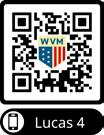
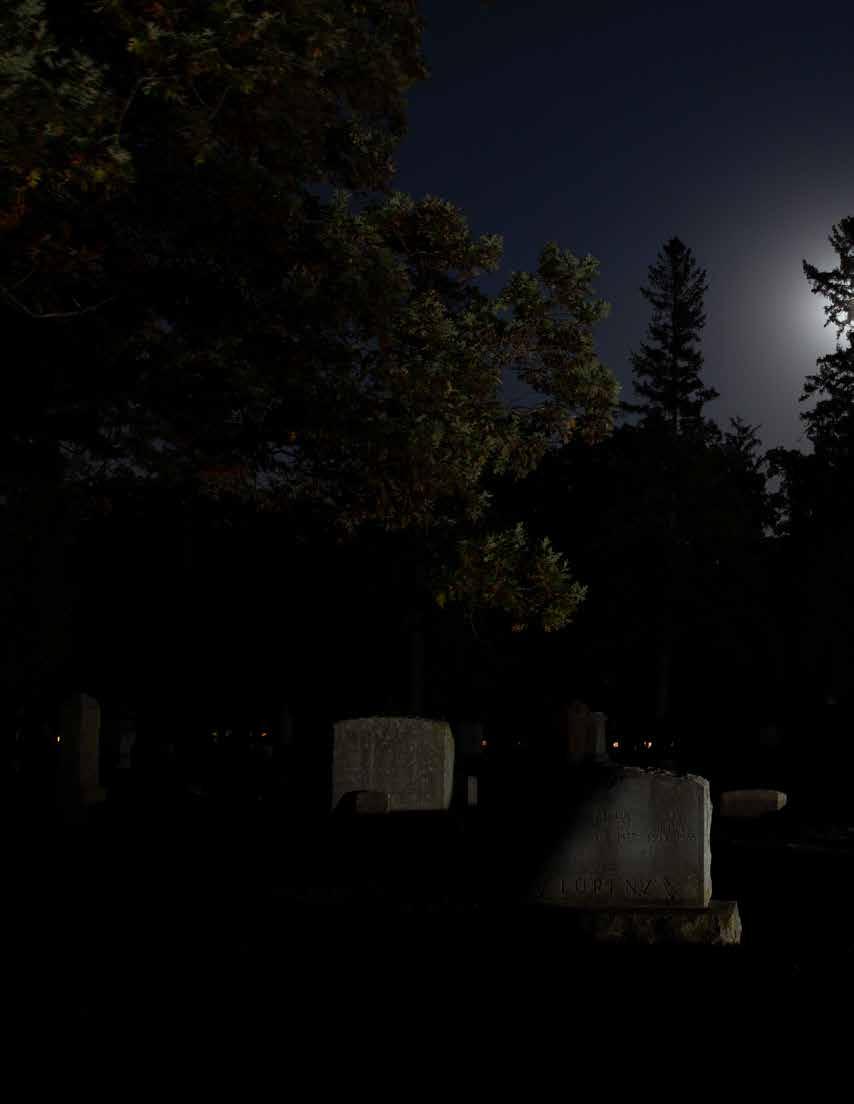
F RO M THE BA LEF IELD
T O THE B A O T B OX
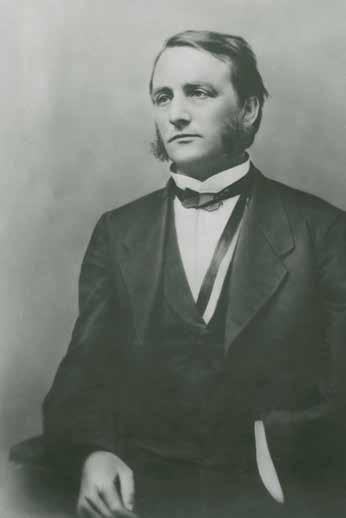
Join the Wisconsin Veterans Museum for our 26th annual Talking Spirits: Forest Hill Cemetery tours as we bring this important part of our history to life through the stories and historical reenactments of those who played an important role in driving Wisconsin ‘Forward.’ Wisconsin veterans fought in the Civil War to preserve the Union and eliminate slavery. This transformational conflict ushered in societal changes that progressed in the decades following the Civil War. This progress, as articulated in our state motto, ‘Forward,’ demonstrates Wisconsin’s perpetual drive to be a national leader in suffrage and civil rights.
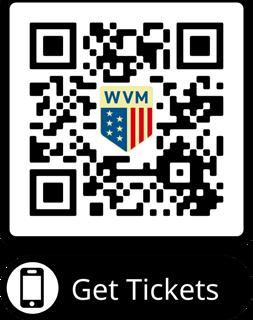
Lucius Fairchild a Civil War veteran and three-term governor of Wisconsin (1866-1872). He was a supporter of civil rights for Black Americans, women’s suffrage, promoted soldiers’ aid and state institutions.
Frances Bull Fairchild, wife of Lucius Fairchild who inspired the Governor to advocate for women’s suffrage. Her efforts pushed women closer to the ballot box and supported women in higher education.
Jarius Fairchild, father of Lucius Fairchild, was a politician and a businessman. He was the first State Treasurer of Wisconsin and the first Mayor of Madison, Wisconsin.
Ezekiel Gillespie, a formerly enslaved person who moved to Milwaukee. In 1865 he attempted to vote and was denied because he was Black. His case before the Wisconsin Supreme Court made way for the expansion voting rights to Black men in Wisconsin.
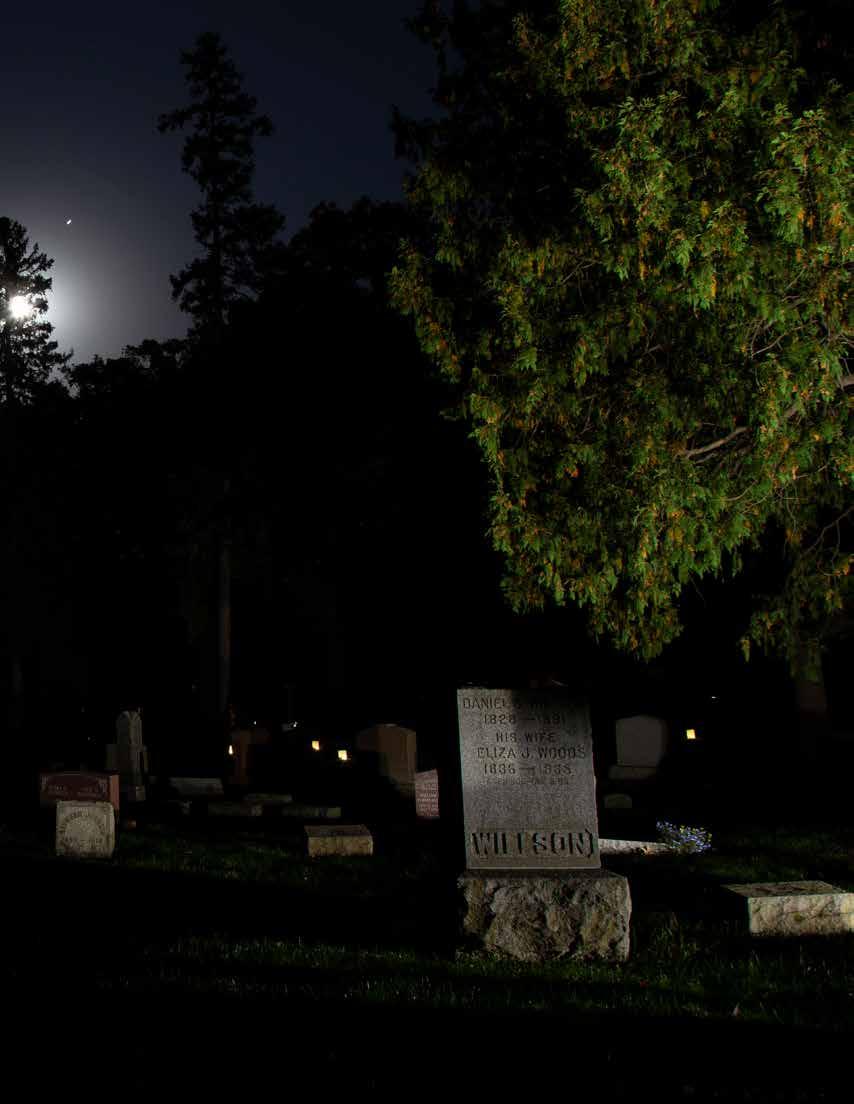
School tours Monday, October 7 through Thursday, October 10
Candlelit tours (public), Saturday, October 12
Daytime tours (public) on Sunday, October 13
It is with deep sadness that we announce the passing of our longtime supporter and member, Gary Van Kauwenbergh. Gary served in the U.S. Army from 1973 to 1977, and later rejoined military service with the Wisconsin National Guard and the U.S. Army Reserves, dedicating 20 years to serving his country. Gary had an unwavering passion for history and spent countless hours researching battles, weaponry, uniforms, and flags. Most recently, he helped raise necessary funds to help conserve the Miner’s Guard flag in the museum’s collection.
The Miner’s Guard Flag was made in 1861 by Mrs. Geo. W. Cobb of Mineral Point and presented to Company I of the Miner’s Guard, 2nd Wisconsin Volunteer Infantry. It was carried for the duration of the war. Captain George Otis, captain of the company, later sent it to Mr. James B. Prideau of Mineral Point. Stenciled on the flag are the names of the engagements in which this regiment participated.
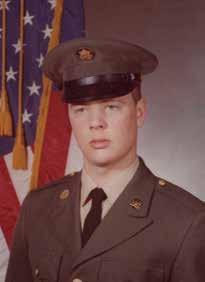
In addition, he donated an Austrian Lorenz rifle and quadrangle bayonet, used by the 2nd Wisconsin and the 7th Wisconsin from 1861 to 1863, which is a testament to his commitment to preserving history. This M1854 Lorenz was the third most commonly used during the Civil War and a quintessential example of the muskets used by the 2nd Wisconsin Volunteer Infantry Regiment.
To honor Gary’s legacy, friends and family donated in his memory to the Wisconsin Veterans Museum Foundation to help fund a conservation project. These funds will be used to purchase a conservation-quality torso for the Chipman Frock coat (pictured below), worn by Charles F. Chipman, of Rock County, Wisconsin, who served as part of the Iron Brigade with Co. F, 7th Wisconsin Infantry during the Civil War. He enlisted on February 6, 1864, and was wounded three months later during the Battle of the Wilderness on May 5, 1864. These donations will also help purchase a custom conservation mount for the Lorenz rifle, and together, they will be on display in the Civil War gallery allowing us to honor Gary’s legacy and continue preserving history for future generations.
Our deepest condolences go out to Gary’s family and friends during this difficult time. May Gary Van Kauwenbergh rest in peace, knowing that his contributions have made a lasting impact on preserving history for generations to come.
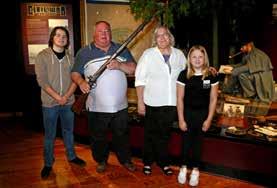
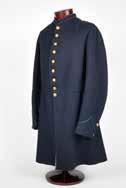

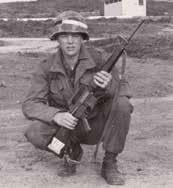

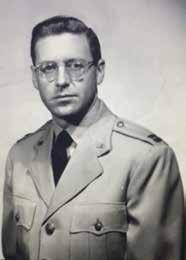


Brig. Gen. (Ret.) Lewis B. Harned, M.D.
Meet one of our lifetime members and dear friends, Lewis “Lew” B. Harned, M.D. Lew grew up in Madison, Wisconsin and graduated from Wisconsin High School in 1942. At the time, the U.S. was involved in World War II, but Lew was classified as 4-F (unfit for service) by the U.S. Army because of his eyesight. He volunteered for the American Field Service and served as an ambulance driver attached to the British 8th Army and later the U.S. 5th Army. He traveled to North Africa, the Middle East, and Italy during his service in World War II.
In 1947, Lew graduated from the University of Wisconsin and then went to Hahnemann Medical School in Pennsylvania. There was a need for doctors during the Korean War and his medical degree allowed him entry back into the U.S. Army. He was then transferred to the U.S. Air Force and served as a surgeon at the 2791st Air Force Hospital in Utah until 1955. Following his time out west, he continued to work as an orthopedic surgeon in Waterloo, Iowa. He later moved with his wife and children back to Madison to start a sports medicine clinic.
In 1986, Lew joined the Wisconsin National Guard and was the oldest commander in the field, leading the 13th Evacuation Hospital during Operation Desert Storm. In 1992, he retired as brigadier general, as required by his age at the time.
On August 17, Lew celebrated his 100th birthday. Thank you for those who sent cards to help us in wishing him a happy birthday and we hope his day was filled with all his favorite things! Lew’s daughter set up 99 things for him to accomplish before 100 and you can check them out on Facebook under “Lew Ninety-Nine.” From skydiving, to curling, riding motorcycles, and more, Lew you are an inspiration to us all!
We thank you for your service, dedication, and continued support to the Wisconsin Veterans Museum, Foundation, and community.
You can listen to more of Lew’s story by checking out his oral history on our website or by scanning this QR code. (Oral History Interview with Lewis B. Harned (wisvetsmuseum.com)
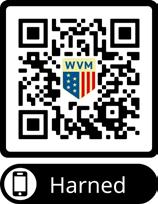

A big thank you to everyone, especially to all our sponsors, for making our 20th Annual WVMF Golf Outing, sponsored by U.S. Vet General Contracting, LLC another successful year! Every year we are amazed by the strong support we receive from our golfers and sponsors. This year, we sold out in four weeks with 128 golfers and together through registrations, donations, and sponsorships we were able to raise over $39,000. The funds from the golf outing this year will provide critical financial resources for the museum’s programs. We are so grateful for your support and extend a heart-felt thank you for your participation in our annual fundraiser. Thank you for helping us to continue sharing the stories of our Wisconsin veterans!
MAJOR SPONSOR

ASSOCIATE SPONSORS

CHERYL HEILIGERa
PUTTING CONTEST SPONSOR

DRINK/FOOD CART SPONSOR

HOLE SPONSORS
COL (RET) RAYMOND G. BOLANDa
GEN (RET) LEWIS B. HARNEDa
WILLIAM & JACKIE HUSTAD





HERO SPONSORS
GEN (RET) LEWIS B. HARNED
EDGEWOOD COLLEGE MILITARY & VETERANS SERVICES
MICHAEL ELY
MADISON HISTORY ROUNDTABLE
AMY LOKRANTZ
DENNIS WAGNER
TERRYTOWN PLUMBING
DRIVING RANGE SPONSORS
DAVE SHAWa


TRIVIA CART SPONSOR
FRED & GINNY MCCORMICKa
HAIL MARY
"IN LOVING MEMORY OF MARY LANGE" BALL TOSS SPONSOR
THE HAUSMANN GROUP
US VET GENERAL CONTRACTING, LLCa
HONOR ROLL SPONSORS
BILL HUSTAD
HONORING THE MEMORY OF LT WALTER M. GIBSON KIA 10-28-1969
AMY LOKRANTZ
HONORING HER DAD, US NAVY VETERAN EVERETTE LANGEa
VOLUNTEERS
TARA DUNCAN, NAOMI BRYANT, JOHN MICHAEL KRIEGER, RICK LANGE, GINA MEYER, MARY SOMMERS, DENISE TINCHER
To view all upcoming museum events, please visit our website at WisVetsMuseum.com/event-calendar/
THANK YOU DONORS A most sincere thank you to all who donated from March 2024 through end of July 2024. We cannot provide quality programming and award-winning exhibits without your help.
Blake, Phil & Kit
Heinritz, Melinda & Mark
McAllen, Kerry
Berry, Christopher Bird, John
Dane Arts
Edgewood College Department of Military and Veteran Services
Heiliger, David & Christina
Kremer, Marcella
Naleid, William Park Bank
U.S. Vet General
Contracting
Viner, Orrin Wagner, Dennis Whittow, Richard & Janet
Aamotsbakken, Karen
Arango-Escalante, Alejandro & Erin
American Legion Post 0029 (Kewaunee Post)
Anderson, Donna Angevine, Jim
Barnett, Jodi & Jim
Barth, Paul Berg, Troy
Bernards, Cathy & Donald
Boland, Raymond Bootz, Jeanne
Bradley, Douglas & Pam
Bull, Ronald Campbell, Frederick Cheney, Scott
CTW Abbey Carpet & Floor
Culver’s
Dolinar, Frank
Duecker, Robert
Erickson, Tim
Fargen, Joseph
Finley, Barbara
Flanagan, David & Maureen
Fonger, MAJ Linda & COL Michael
Grabowski, Ervin
Graff, Dan Greenwoods State Bank
Gronli, Dan Gruennert, Jim & Joann Hall, Jonathan
Hansen, Jennifer & Kenneth Harned, Lewis Hattenhauer, John & Sally Heiliger, Cheryl Heiliger, Dan & Tarah Heiliger, Jr., Donald Henning, Bud Lee Hinz, Stacy Lee Hollenbeck, Gail Howell, Jonathan Hustad, William & Jackie Johnson, Mark Kelly, James & Carol Kennedy, Thomas Kielisch, Gary Kill, Tim Klem, Bruce Kolakowski, Peter & Jane Krueger, Cal & Susie Larson, Robert Laufenberg, L. Leinicke, James Lokrantz, Amy Loomis, Harold Madison History Roundtable Madison Navy League Markert, Bruce & Kathryn
McCormick, Frederick & Ginny
McElgunn, Christopher McEvilly, Paul McGeshick, Roger Millane, James & Monica
Millsap, Nathaniel Mollenhoff, David Monona Grove Business Men’s Association
Mullins, Michael & Karen
Musicnotes Nettesheim, Daniel Olesen, Gerald
Olmsted, Michael
Oregon Middle School Parker, James Passante, Vicki & Tony Patterson, Bill Peterson, Gary Porth, Guy
Price, Andrew Rabinowitz, Abe
Ronge, Robert & Sherri
Rotary Club of Madison
Schemenauer, Ken & Eleanor
Schrum, William
Seidel, Alice & Lee
Seifert, Howard
Shaw, David
Shedosky, Alicen
Shropshire, William Sloan, Fred & Nancy Smith, Gary & Patricia
SVA Certified Public Accountants
Terrytown Plumbing
The Hausmann Group Trent, Ray Trest, Dennis Unger, Jeffrey
Van Kampen, Phillip
VFW Greendale Post 10519
VFW Post 08021 (Westby Post)
VFW Post 10272 (Oregon-Brooklyn Memorial)
VFW Post 328 (Stoughton Post)
VFW Post 9511 (Mount Horeb Centennial)
Village Caregiving
Wagner, Gregory
Waity III, Charles Weedman, William Weier, Anita Weirauch, Gary
Wisconsin Vietnam
Vets Chapter 3
Wise, Mitchell & Roslyn Wolf, Richard & Marjorie Woolley, William & Jean
Woulfe, Martin Zandarski, Michael
Allen, Julie
American Legion Post 0214 (Bates-O’BrienHowe-Wiegel Post)
American Legion Post
0257 (Beckett-Kurth Post)
American Legion Post 0437 (GreeningBuelow Post)
Anderson, Daniel & Barb
Anderson, Merry Anderson, Tim & Regina Anderson, Tommy
Arawinko, David & Judith
Arndorfer, Roberta & James
Arnold, Barbara Bach, Daniel Bachmann, Richard Banda, George Best, Linda Bieniek, Brian Bloom, Wilson Bradley, Bruce Bradley, Richard Brindis, Debra Brink, Ann Catherine Bublitz, James Bull, Ronald Burton, Nancy Carlson, Jen Chabalowski, Robert Christianson, Bill Churchill, Julie Collins, Chaplain Dean Crawford, Karen Devitt, Linda & Patrick Dow, Stephen Duerr, Jerome Ely, Michael Englesby, John Erwin, Patrick Evangelist, Virginia Fetterly, MAJ (Ret) Roger Fisher, Michael Fritschler, Ilene & Mark Gauger, Stephen Gingras, Jim Greene, Dan Haag, Douglas Haidinger, Shirley Hampton, Kevin & Brittany Strobel Hansen, W. Lee Hanson, Bob Harris, Vernon & Jo Hembel, Alan Hemmer, Paul Hesselbein, Robert Huismann, Tom & Karen Isensee, Natalie Jaeck, David Janz, James Kallas, Phillip & Priscilla Kampen, Sharon Keen, Patrick Kelly, Joanne Kind, Arn & Margaret Kleinsteiber, Larry Knudson, William Knutson, Joyce Koeppen, John Krikelas, Andrew Kurtz, James & Rebecca Lemke, Curt Lemke, Ralph & Betty
Leverance, James & Jane Lindeman, Roy & Dorothy Maddox, Mikki Mathews, Joane & Ric Mc Ternan, LT COL George
McFarland & Company Inc. Publishers McRoberts, Ida Gay Melancon, David Mertes, Bob
Miller, Ricky Mumma, David Navy Club of the USA, WI Squadron, Ship 60 Nelson, Roy & Catherine
Oconomowoc Area Senior Center
Pardeeville High School
Pirozzoli, Mary Powles, John & Joanne Race, John Radosavljevic, Julie Rasche, Pamela Ritzert, Lisa Roberts, Mary Louise Roden, Robert Rothering, Kathleen Rusch, Lynn
Sadicario, Morris Schaefer, James Schroeder, Matthew Schuette, Dan Speracino, Denise
St. Charles Catholic
St. John’s Lutheran School
Stevenson, Jennifer & Lorraine Schwager Stutzman, Randall Sunrise Elementary School
Szymoniak, Krzysztof Van De Loop, John & Brenda
Vondran, Nathaniel Ward Decatur, Mary Ann Wartinbee, Tim Wartolec, Walter Weber, Nicholas
Wegner, David & Mary Wisinger, Roger & Julie Wren, Christopher Young, Julie
Ziegenhorn, Mark Zimbric, Gerald & Hazel